




Producers already know that they are going to have drier than normal conditions to start out with this spring because of minimal snowfall over the winter in many areas, so toxic plants are something they need to be more aware in the months ahead, says Kim Brown, Manitoba Agriculture’s weed specialist.
“Definitely over the last few years we have seen some drought issues,” she says. “Some of these poisonous plants tend to grow in wetter areas and those wetter areas have dried up. Due to the dry conditions, animals are able to get into and forage in areas they wouldn’t normally touch because they are usually swampy and
wet. We have definitely seen some poisonings come along that way.” Plants to avoid
One of those poisonous plants to try and avoid at all costs is water hemlock that grows in wetter areas. There have been multiple cases of suspected water hemlock poisoning across Manitoba in recent years.
“One of the problems is there are other plants that look very much like water hemlock,” she says. “Water parsnip is very similar, but it’s not nearly as toxic. But producers should assume it’s all water hemlock because they don’t know unless they get really up close and look at it. It’s possible to have lots of populations where there are both plants. When it comes to water hemlock, I would just say do everything you can to keep the cattle away from that plant. It’s very toxic and it shouldn’t be handled by humans either because it is so poisonous.”
Seaside arrowgrass, that grows in saline areas, is

another species that producers should be concerned about, especially in a dry year.
“If we are in a drought, we tend to see those saline areas increase in drought years. Salinity increases because of the net upward movement of water, we don’t have enough water from above to push the salts back down,” Brown says. “The salts end up evaporating at the surface, and other plants don’t like to grow where it’s salty, so you end up with some of these species – like seaside arrowgrass - that do like to grow in salty areas. Animals will eat them because they are green and they may like the higher salt content in them.”
Field horsetail (or scouring rush) contains a compound that is toxic to cattle but more so to horses, as animals being fed grain do seem to have more resistance to the dangerous compound in the plant.
As many of us are calving and thinking about sending cows out to pasture, many of us feel the stress and anxiety that these things bring when dealing with livestock predation issues. As someone ranching on the Riding Mountain Escarpment, close to the national park, and who has spent a number of years working in community pastures, dealing with predation isn’t something new.
While the picture library on my past and current phone – used for documenting images of predation kill sites and cattle losses ‒ might raise some red flags to folks that aren’t used to, it is something that many of us have to have. What does however surprise me is the huge increase in predation pressures we have seen throughout our province in the last couple of years, and especially last year, with this issue showing up for producers who had no experience with it in the past. There is lots of
 MATTHEW ATKINSON President’s Column
MATTHEW ATKINSON President’s Column
speculation as to why there has been a huge increase in interactions in regions that have always experienced predation, along with regions that typically never had a significant issue in the past. Whatever the causes are, the bigger question is where do we go from here.
As I am sure most producers know, the first job is to photograph and preserve any remains and/or evidence and then call your local MASC office to start a claim. Now, it can be incredibly hard to preserve what little evidence some of these very effective predators leave behind, especially when that may well be on a weekend, or



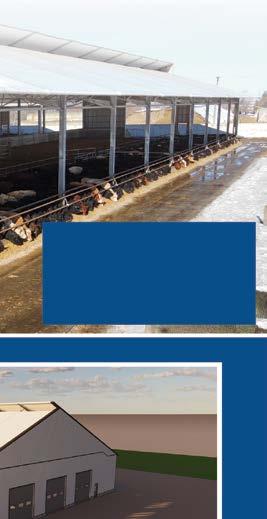

some other time that leads to delays in adjustors coming out and viewing this in person, if they so choose to do an on-site inspection. It seems as of late, they have a strong desire to come out and view this first hand, even if a lot of evidence was already provided and what can be seen in person is a few days old, deteriorated and often, quite frankly, unrecognizable due to weather or other activity that has occurred at the site, like other cattle moving through it.
I, and I believe many others, can find these interactions with adjusters to be varied, with the adjustors being quite understanding of the producers’ frustration of dealing with predation losses, to some situations where producers are left feeling like they are being challenged for making a legitimate claim. There are many adjustors with a lot of predation experience and they do a great job, but there are also those who don’t have an adequate understanding of what they are looking at and are still willing to debate with producers, many of whom have far too much experience with seeing the results of predation. Now, I would be the first person to say I would be a terrible person to go looking at crop damage in a field because it is not an area where I am knowledgeable or experienced. So I wouldn’t be a good candidate and I feel the same is true for predation claims and that is why it is so important to have well trained people assessing predation claims.
Far too many producers that I talk to have had these negative and/or inconsistent responses and interactions with MASC adjustors. It is a concern we have and continue to identify with MASC, raising the need for good training to help make the claims process go more smoothly so that producers are not frustrated with programs that are there to help them. This leads to a bigger problem when we talk about the need for more livestock producers to take on business risk management tools, like forage and pasture insurance, from these providers. It is a hard thing to try convince many producers to consider using BRM programs after having had negative dealings with MASC in the past on predation. I think the first step at this point comes down to doing the best we can as producers to document the losses, through pictures and everything we possibly can, and be willing to seek an appeal if we see these claims denied.
The next step that producers should be aware of, and unfortunately far too many are not made aware of this option, is that for verified predation claims through MASC you are eligible for a Manitoba Trappers Association (MTA) response. If you request this to be filed with your predation claim, the MTA will follow up with you and work on a targeted response to control problem predators if you desire. This is a good option that is often underutilized because producers just are not aware of it. This is important because in my experience, those problem predators don’t go away. In moving cattle, those wolves especially, seem to either follow the herd, move on to a neighbor’s herd or may be waiting to pick up right where they left when you put cows back in that pasture the following year.
Predation really is a whole community issue and it is all of our responsibility to leave non-problem wildlife alone and have a swift and targeted approach to dealing with problem predators. Along with this, we all have responsibilities to do what we can to limit creating problem predators, by minimizing risk factors in our herd management practices and disposing of any dead stock in a responsible manner. Wolves cover a surprisingly large area and once they become a problem, they can be quite a few producers’ problem.
Greetings beef industry colleagues, Spring seems to be here at the time of writing this column in mid-April, although perhaps I shouldn’t speak too soon. We have all seen May snowstorms. At this point, I would take the added moisture, but I would hate to see another 2022 spring storm that led to unfortunate calf losses. Time will tell what Mother Nature will provide. Regardless of the next few weeks, please keep us at MBP informed about production conditions as we know the moisture conditions have been quite variable around the province. I also encourage producers to take advantage of the various business risk management programs available to cover some of their risks that can occur in a production year.
One of the main topics of focus at MBP and within our industry right now is livestock inspection. As I have stated in past columns, this topic is a difficult one that has split membership for years. However, our board has committed to determining all aspects of implementing a more robust inspection system in Manitoba, and ensuring we know the pros and cons of such service if it were implemented. Many aspects of this are still being investigated, and we hope to host some town hall meetings in the coming months to ensure it is for the best of the industry in Manitoba. I look forward to these important conversations with you the members.
 CARSON CALLUM General Manager’s Column
CARSON CALLUM General Manager’s Column
MBP is consistently providing feedback to government departments, such as Manitoba Agriculture department and Economic Development, Investment, Trade and Natural Resources about predation-related challenges. We met with a rep from the Manitoba Trappers Association to learn more about their role in delivering the targeted predator removal program and challenges they face. MBP was pleased to see the commitment in the recent provincial budget for new funding to implement a Livestock Predation Prevention Strategy to better protect livestock from predatory animals, and we are awaiting details about this. MBP is optimistic about the potential to improve the approaches to dealing with problem predation.
As we look ahead, disease management and improved cattle traceability tools will be crucial for the industry’s viability. Improving the ease of movement reporting not only to meet the federal requirements but also to reap the benefits of improved information flow
for our industry is a big lift. MBP is collaborating with industry colleagues to about ways to utilize technology to attempt to simplify things and to provide benefits for herd management at the producer level as well. Many tools are in development, such as a smart phone app for CCIA tag reporting. Moreover, using existing tools like panel readers and wand readers will also improve this system. MBP is planning to host an industry workshop demonstrating the options out there, and how they could benefit your operation and the industry as a whole. Stay tuned for further details of this July workshop.
Before I close, I want to thank all who attended the Royal Manitoba Winter Fair. It was a great event and our booth was a top draw for the crowd. We had a cow/calf pair, people could try out the Guardians of the Grasslands online game, and they could ask questions about how beef cattle are raised. A big draw at our booth was the presence of Bindi the burrowing owl from the Manitoba Burrowing Owl Recovery Program. All these pieces tied together very well, showcasing the importance of beef for conservation of grassland habitats and the species the reside on it. Thanks to Karen Emilson for staffing MBP’s booth all week, Andre Steppler for bringing the cow/calf pair and our directors who took turns representing MBP at the booth too.
Happy calving and planting season all!


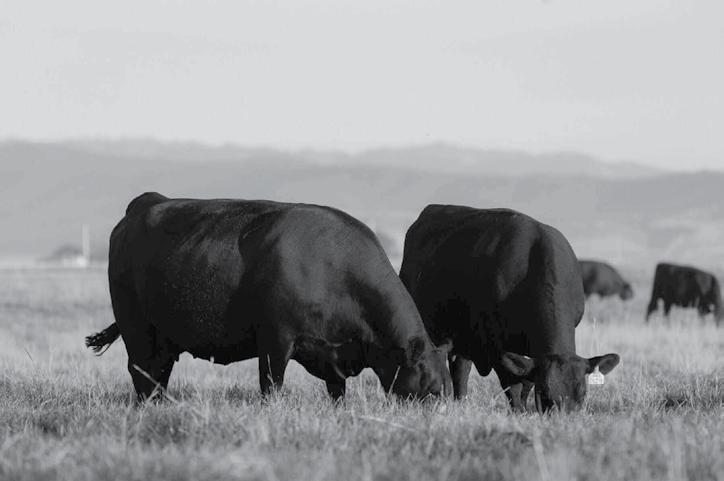
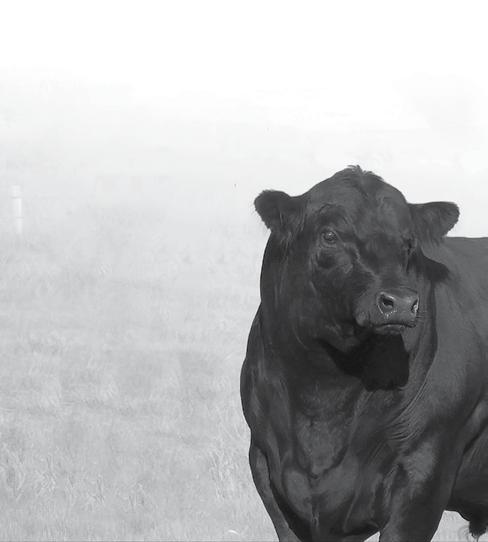

Manitoba has a lot of advantages when it comes to beef production and given the current high price environment, producers are well positioned to leverage those advantages to benefit their operations.
At the Manitoba Beef Producers AGM in February, MBP 2nd vice-president and District 7 Director Tyler Fulton, who is also vice-president of the Canadian Cattle Association, presented figures from surveys that show Manitoba consistently has the country’s lowest cost of production (COP) figures for cow/calf production.
Further, if you also take into consideration that over the last three years Manitoba has been on par with or had the highest prices for 550 lb. calves during the fall run compared to Alberta and Ontario, the province’s cow/ calf sector, in particular, is in a phenomenal position to capitalize on the current high market trend, Fulton said.
He also made the point that although Manitoba’s production systems are predominantly hay-based, local producers have the ability to pivot to a more diverse array of winter feeds than any other jurisdiction.
“In 2021, when in the thick of a drought, the ability to flip bad production crops to an alternate use was a huge thing for us and others across the west,” he said.
Geography and climate big pluses
Manitoba also has an advantage, Fulton said, when
it comes to transportation logistics because producers do have the option to send cattle west, east or even south depending on who is paying the highest prices.
Manitoba has a climate that is generally conducive to raising cattle. Fulton shared long-term data that showed Manitoba is generally a higher precipitation area, which offers advantages for things like growing dryland feed corn but also allows stocking rates on pastures that far exceed those in neighbouring provinces.
“That shifts the economics of grassing, and for that matter of winter feeding,” he said. “Ontario has benefits
Taking the time to build relationships with buyers and share the details of your program is time well spent, ...
of moisture but they have land costs that are tenfold what Manitoba’s are, so I feel we have the best of both worlds: a climate conducive to raising cattle without having to contend with land prices in excess of $30,000 to $40,000 an acre.”
“I can’t say how optimistic I am about our potential here,” Fulton concluded. “Manitoba can and will be the first jurisdiction to start growing because the economic



• GRASSFED: “True North Foods is partnered with A&W Canada to supply Canadian grassfed beef for A&W’s grassfed burger program.
• GRASSFED: “True North Foods is partnered with A&W Canada to supply Canadian grassfed beef for A&W’s grassfed burger program.
• GRASSFED: “True North Foods is partnered with A&W Canada to supply Canadian grassfed beef for A&W’s grassfed burger program.
• SERVICES: Whether you are a specialty producer looking to get your product to a speci c market or distributor, or if you are producing commodity livestock for sale, we can partner with you. From our multi-species capabilities to our ability to handle smaller volumes, we o er excellent capabilities for producers in the Canadian Prairies to maximize their pro tability.
• SERVICES: Whether you are a specialty producer looking to get your product to a speci c market or distributor, or if you are producing commodity livestock for sale, we can partner with you. From our multi-species capabilities to our ability to handle smaller volumes, we o er excellent capabilities for producers in the Canadian Prairies to maximize their pro tability.
• SERVICES: Whether you are a specialty producer looking to get your product to a speci c market or distributor, or if you are producing commodity livestock for sale, we can partner with you. From our multi-species capabilities to our ability to handle smaller volumes, we o er excellent capabilities for producers in the Canadian Prairies to maximize their pro tability.
• FACILITY: We have a state-of-the-art facility to allow us to reach markets across Canada, the USA, and beyond. We understand producer’s needs, their care for their animals, and their honest, straightforward nature. Call us to hear how we can work together to get your product to market.
• FACILITY: We have a state-of-the-art facility to allow us to reach markets across Canada, the USA, and beyond. We understand producer’s needs, their care for their animals, and their honest, straightforward nature. Call us to hear how we can work together to get your product to market.
• FACILITY: We have a state-of-the-art facility to allow us to reach markets across Canada, the USA, and beyond. We understand producer’s needs, their care for their animals, and their honest, straightforward nature. Call us to hear how we can work together to get your product to market.
support for growing beef in Manitoba is clear.”
How can producers benefit from this advantage?
When selling his cattle, Fulton has shifted his paradigm from selling a commodity to a specialized product that is in high demand, and says producers need to focus on better understanding that and communicating what they are doing and why.
Sharing a few of his tips and tricks for marketing at the AGM, Fulton says it’s critical to get interest from several buyers (not just one) and to do that producers have to ensure they tick all of their boxes whether it’s on the breeding side, health protocols, pre-conditioning or timing of marketing.
“The goal is to ensure that all the factors associated with those animals is communicated at the time of the sale, whether it’s at an auction mart, online or a direct sale, it’s critical that this information is relayed at the time the decision is being made,” he said.
Being part of a program like Verified Beef Production Plus (VBP+) makes it easy to ensure those boxes are all checked off because they provide records to verify producers’ practices, and it can mean more profitable sales. Cargill and Farm Credit Canada both offer incentive programs that can be as much as $20 per head. Fulton says checking those boxes has put about $3,200 back into his pocket.
Taking the time to build relationships with buyers and share the details of your program is time well spent, Fulton said.
“Don’t be afraid to get active,” he said. “My intent every year is to generate interest, [so whether that’s social media] posts about animals to pique interest, or reaching out by phone and laying out what our program is and how it fits [with their needs].
And take time to understand the market dynamic at play, he adds.
“Depending on the timing and all of the attributes that go into what market directions are, it’s important you are making deliberate decisions on marketing those calves because you realize a premium from that,” he said.
“Even if don’t know who is going to buy the calves in the auction mart, go and have conversations and share your expectations of what those animals should be worth. It makes [buyers] aware they are there and they check those boxes. Anything you can do to influence the situation; interactions and communications do add up to value.”





The 17th Annual Bull & Bred Heifer sale was a great success. We were honoured to see repeat & new customers buying Edie Creek Angus bulls to improve longterm profitability & maternal strength in their cow herd! Bulls sold everywhere from B.C. to Quebec to North Dakota!
How often have beef producers been told that it is consumers who are driving the bus when it comes to the push for beef production to be greener and more sustainable?
That’s not necessarily the case says Sarah Klopatek, livestock specialist with JBS. Speaking at the Manitoba Beef Producers AGM in February she made the case that, although consumers are undoubtedly important and their opinions carry much sway, the strongest pressure for sustainability today is increasingly from companies who need to demonstrate (and be accountable for) their efforts to reduce GHG emissions through the supply chain.
Ultimately, the acid test in terms of consumers being at the forefront of sustainability is that although they do care about things like the environment and animal welfare, they aren’t prepared (or increasingly able) to pay higher prices for more sustainable food.
Companies throughout the value chain, however, are increasingly being pressured to report their sustainability metrics on things such as GHG emissions, water use and quality, worker health and safety protocols etc.
Today, more and more banks and investors are requiring businesses to score well in relation to these sustainability metrics as part of their funding decisions.
“Retailers are really pushing because they also have to publicly disclose their environmental impacts and footprints and so they put the pressure across the supply chain,” Klopatek said. “When it comes down to public reporting, banks, retailers and everyone are coming together because the better their scores are, the more they are minimizing risk. They are actively looking to reduce GHG emissions, improve water and worker safety. All
these things come together; it’s not just the consumer in the grocery store saying do I want product A or B. It is so much bigger than that.”
Why is beef still getting a negative sustainability rap?
Agriculture in general continues to draw negative attention in terms of things like GHG emissions but in reality, it only accounts for eight per cent of direct GHG emissions and livestock accounts for just 4.8 per cent. It’s in the language, though, that the message often gets lost, said Klopatek.
“There are apples and there are apple pies, so direct emissions, that is the apple; from livestock that’s just enteric emissions (like methane) and manure – what is directly coming from that apple,” she said. “The apple pie takes in the apple that is the direct but then you need a crust, so need all the indirect as well to make that pie: transport, energy to run barns, diesel to run tractors, everything else to bring beef to your plate. So, when you see that global agriculture accounts for 30 per cent of all emissions that includes direct and indirect; the apple pie. That is not how we should compare emissions.”
The reason that beef gets negative attention, she added is that it has a greater carbon footprint than any other type of livestock production such as pork, poultry or legumes, but it doesn’t mean it’s not sustainable. The reason is largely due to enteric methane production in the rumen that all ruminants such as bison, deer, elk and moose also produce. As well, feed production – such as
corn – and manure handling also produce about 12 per cent of total emissions for beef production.
What’s important to emphasize when we talk about beef production is the fact that beef also offers solutions to create a lower carbon footprint through maintaining grasslands for carbon sequestration and other ecosystem benefits that are well known such as preserving biodiversity, wildlife habitat and rural communities.
And every effort to improve the efficiency of beef production is also helping to lower emissions. That includes better manure management, improved animal genetics, more renewable energy in processing plants, feed additives to reduce methane. But any solutions towards better sustainability must keep the interests of producers front and centre.
“If we cannot produce beef in a way that makes your break evens work it is not sustainable,” Klopatek said. “Do not push for solutions that do not help the farmer in the process.”
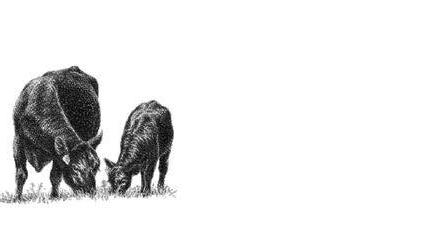



Canada’s national beef organizations were in full swing last year working on behalf of beef producers on a number of different strategic priorities for the industry that included environmental, economic, social and food safety issues. Each took their turn to give a brief update on their activities at Manitoba Beef Producers’ AGM at Brandon in February. Following are highlights from their presentations.
Beef Cattle Research Council (BCRC)
Canada’s producer-funded beef research funder focused on improving productivity for producers as well as public trust, regulatory policy, food safety and beef quality throughout the past year.
For every dollar of producer funding that BCRC invests in research, it leverages three dollars in government funding, and it partners with 40 universities and research institutions across the country.
As BCRC commenced the first year of a new fiveyear, $21.7 million science cluster agreement co-funded by Agriculture & Agri-Food Canada and industry, its focus is on reducing methane emissions and increasing carbon sequestration, as well as improving animal health, and animal, feed grain and forage productivity.
“We want to achieve environmental objectives, but also make sure that what we are doing is helping producers,” said BCRC Executive Director Andrea Brocklebank. “Things like improving and developing new forage varieties, improving animal health and cow/calf survival, those types of things.” An example is a research project with the University of Manitoba into intercropping legumes with corn to extend winter grazing.
Part of the BCRC’s extension mandate is to oversee the Verified Beef Production Plus (VBP+) on-farm training and certification program that is delivered in Manitoba through Manitoba Beef Producers.
BCRC also works hard to get its project results out to producers through its blog, e-newsletter, and via its beefresearch.ca website that has various topic pages offering information, tips, tricks and videos relevant to producers. Two of its latest information series include CALF911 that provides short, digestible information for producers about how to improve calf survivability and improve conception rates, and another about safety when using remote drug delivery devices.
The website also has decision making tools for producers covering everything from how to properly take a water sample, calculate the cost of drilling a well or how to value bulls, to ration balancing software and Forage U-Pick, a tool for recommending the best forage species to grow in specific areas and soil types.
Canadian Roundtable for Sustainable Beef (CRSB)
CRSB Board Chair Ryan Beierbach introduced highlights from the CRSB’s second National Beef

Sustainability Assessment (NBSA) that wrapped up in 2023 and which will help the organization identify priorities for future projects and activities that support its strategic goal of ensuring the sustainability of the Canadian beef industry.
The NBSA was guided by a scientific advisory committee made up of producers, scientists and people from different sectors of the industry and explored three strategic priority areas: environmental, social and economic.
The Canadian beef industry is scoring well on the environmental front, where the assessment looked at greenhouse gas emissions, carbon sequestration, water and carcass utilization and land use and biodiversity.
Key findings include a 15 per cent reduction in GHG emissions to produce one kilogram of beef, and puts the industry in a good position to try and reach the government’s target of a 33 per cent reduction by 2030. The reduction was driven by things like improved animal health, feed efficiency, better conception rates and improved feed conversion.
“The producer wins because we are producing animals more efficiently,” Beierbach said. “The changes were economically beneficial to producers, so they are making more money but we are reducing the carbon footprint because cattle are growing faster and to a bigger end weight, and staying healthier, and research has played a huge part of that.”
Beef production is also helping to store 1.9 billion tonnes of carbon in pastureland, estimated to be nearly 40 per cent of the total organic carbon stocks in Canada. And, beef producers are retaining wetlands and preserving wildlife habitat.
The news isn’t quite so good on the social side, with challenges in recruiting labour on the farm that’s leading to stress and issues with mental health and safety. CRSB is working with partners such as the Canadian Cattle Association to try and increase the labour pool and Do More Ag to help support producers’ mental health.
On animal care, Canada again scores highly for its good industry practices, a strong code of practice and research to back up the positive story of beef production in Canada. The assessment also found a reduction in the use of antimicrobial products across the industry.
One of the most important indicators of economic viability is consumer resilience and beef demand, both of which remained strong, despite record high beef prices. Domestic demand for beef rose five per cent and 16 per cent internationally since the last assessment.
“We don’t have a lot of control on the selling price but do have control on the cost price, and by improving our practices so we keep our expenses low, that has helped improve the income side,” Beierbach said.
Producers who opt to be CRSB certified through programs like VBP+ can also access some economic incentives such as Farm Credit Canada’s Sustainability Incentive program that rebates up to $2,000 of interest payments, and Cargill’s Certification Recognition Credit that provides a rebate of $20 per qualifying animal processed at a Cargill facility.
Canadian Cattle Association (CCA)
CCA’s role is to ‘show up’ at Ottawa and advocate for beef producers and the beef industry, said Tyler Fulton, vice-president of CCA, who gave an overview of the main policy issues that the organization has been focusing on over the last year.
Trade tops the list of issues that CCA is currently working on, including its opposition to bill C-282, a private members bill now before the senate that takes supply-managed sectors off the table during trade talks. CCA has stated that C-282 has the potential to ‘severely damage trade relationships and highly constrain the Canadian government’s ability to launch, negotiate and renegotiate the best deals for all of Canada.’
CCA has also been working on aligning Canada’s specified risk material rules (that are a holdover from BSE) with U.S. rules, and a scientific risk assessment is currently underway as part of those efforts.
Progress on a bilateral Canada-UK free trade agreement halted in January when UK negotiators walked out of talks. A major sticking point that is important to beef
producers is the UK’s reluctance to recognize its food safety system, in part because of the use of peroxyacetic acid to prevent E-coli.
CCA’s Chief Veterinary Officer has been involved in establishing a foot and mouth disease plan and vaccine bank.
“We envision a great deal more interaction in building out a plan so that in the event of an outbreak we are as ready as we possibly can be,” Fulton said.
CCA has also worked with partners like Ducks Unlimited Canada and Nature Conservancy Canada to develop a Grassland Conservation Initiative that aims to provide incentives for producers to maintain and sustain their grasslands.
“They have the potential for short term, medium term and long-term arrangements not requiring any type of easement; just an agreement that says they will manage their grassland in a certain way,” Fulton said. “It opens the door to get some support that pays for the benefits you are already providing from a habitat standpoint.”
There is still lots of uncertainty surrounding COOL (the proposed U.S. Country of Origin Labelling rules) and Fulton said they expect to have more information on that file in the next few months.
“Our goal is to mitigate or eliminate the potential for disruptions to live cattle and beef trade between our two countries,” he said.
CCA continues to attend conferences around the world where it is able to tell a positive environmental story about Canadian beef production, and to promote its environmental stewardship awards and youth programs that are leading agriculture around world in its ability to bring in youth and get them engaged in the industry.
Canada Beef
Canada Beef’s incoming president, Eric Bienvenue gave an overview of Canada Beef’s work to promote beef and influence consumers domestically and abroad to choose Canadian beef.
Canada Beef has offices in Mississauga, Japan, South Korea, China, Taiwan and Vietnam and targets the wholesale and food service sectors, as well as consumers through its various digital marketing channels. It has a full-time nutritionist, two chefs and sous-chefs on staff working on recipes and information about how to prepare and enjoy Canadian beef at its Centre of Excellence that also produces 300 videos on cooking, preparing and presenting Canadian beef. One of its recent videos promoted the grading system in Canada, and public engagement and communication remain a priority for the organization that is partly funded by producers through the national beef check-off.
Canada Beef has brand licensing agreements and partnership program with packers who export to different markets, and provides insights and market intelligence though its monthly newsletter, marketing library, information gateway and market development efforts.
Highlights over the last year include a six per cent increase in the value of beef exports despite the volume being down slightly, with prices remaining strong, with 50 per cent of production going to the U.S.
New initiatives that Canada Beef will build on in 2014 include promoting the use of the Canada Beef National Gateway that launched in January in 3,300 stores across Canada. Consumers can scan the UPC on a beef package label and it will take them to information about the cut, recipes, nutritional information, and details about how to prepare and cook it. It has also just introduced a 3D training tool for packers, food service, wholesale and even consumers that explores 70 possible cuts of beef.
Bienvenue also emphasized the importance of adjusting to new domestic market segments for beef, particularly new Canadians. It is expected that by 2041, immigrants and their children will represent more than half of the total Canadian population and offers a great opportunity for the beef industry to adapt cuts and recipes, connect with and meet the protein needs of these new Canadian consumers.
Everyone knows that food prices are high these days, and what’s driving that is the global grain system that underpins everything from packaged goods to livestock feed. But what’s troubling about today’s overall global grain picture, says Dr. Al Mussell, Director of Research at the Canadian Agri-Policy Institute (CAPI), is that there isn’t a lot of grain in reserve any more.
“We have had trouble building stocks globally since 2017,” he told attendees at the Manitoba Beef Producers AGM in February. “Production is up, but utilization is up as much or more. We are going hand to mouth, year in and year out, without much buffer.”
So where is our food going to come from if we continue to struggle to build grain stocks?
“Our food comes from North and South America, a bit from Europe, Australia and New Zealand, but the big importers are overwhelmingly Asia, who are also the biggest producers because they have billions of people to feed,” Mussell said. “So, we’re having trouble building stocks, and it’s coming from fewer places but we are one of those places.”
tries,” Mussell said. “Animal agriculture is important, and it’s important that people develop a systems way to look at it.”
That’s not an easy thing to do. As an example, monogastric animals such as broilers and hogs are the most efficient at converting feed to meat, while ruminants like cows are not as efficient. But that only looks at one part of the picture.
“When we bring in other dimensions, such as what do animals eat that could otherwise have gone into the human food stream, we have a different image,” Mussell said. “A ruminant can eat inedible material from a human perspective. We know this but a broader audience may not. We need a balanced scorecard. You can’t have people grabbing a measure like feed conversion ratio and saying that’s why we eat chicken instead of beef. It’s a lot more complicated than that.”
exposed to heat over 32 degrees C show significant reductions in food intake and milk yield, problems with conception and higher mortality particularly in calves.
Another concern is the effect of climate change on the chemistry of crops like wheat, where new research is suggesting it’s getting more difficult to maintain protein levels.
“So, we are going to have probably lower quality grain, and the change in the chemistry of the kernel also can affect seed vitality and emergence,” Mussell said.
Other sobering challenges include the fact that increased grain and oilseed production has to some extent come from land conversion, which isn’t sustainable for the future, the labour gap continues to widen, and there are increasing problems with rules-based global trading systems, and maintaining social capital.
“We have to come back to a core focus that is productivity, and build social capital,” Mussell said. “We have to redouble our efforts and work together on a board basis and particularly, to communicate with the public.”
Canada’s advantage
Against this backdrop, Canada has many advantages, especially when it comes to animal agriculture, although there are also challenges.
“We have a comparative advantage and we need to understand that,” Mussell said. “Foods from animal origin are healthy, they are necessary in people’s diets and we have made improvements in productivity.”
Canada’s livestock sector is a low GHG emissions producer and it continues to focus on increasing production efficiencies such as breeding, conception rates, rumen manipulation and feed additives to reduce methane emissions to achieve greater emissions reductions in the future.
“That surely needs to factor into a less food secure world and the policies we take towards animal indus-
Canada is extremely efficient in its beef and dairy production compared to other countries and there are many reasons for that. One is a low-priced grain complex.
“Over time we are pretty much always the lowcost region for feed barley and we go back and forth in terms of where we are at on corn,” Mussell said. “This highlights the point that you bring livestock to feed, you don’t bring feed to livestock. Which is why we have animal feeding clustered in feed production regions. We have the feed, the people, the infrastructure, the institutions. The grain price complex has taken a bit of a tank – but I think it’s temporary because there isn’t a lot of food in the world. We have it, we have it to sell and we need to assert ourselves.”
Not without challenges
The livestock sector will not escape the effects of climate change and extreme weather. Recent data from an Ontario government study showed that dairy cattle
Experts like Temple Grandin are warning that as we focus excessively on productivity traits in breeding, it could be to the exclusion of more general biological functions.
If we are seen as pushing production traits that make you money but ignoring the basic functions of the animal, and the quality of life that the animals live, I worry others will step in and take control of that for us and it won’t work well for the industry,” Mussell said.
Canada has to lead
So how does Canada, which has lots of advantages and offers solutions to some of these vexing problems, become a bigger player in the game?
There are some practical things that need to happen, Mussell said, such as pushing for public policies that maintain grazing lands because you can’t build a cow herd without the land to feed them on. Canada also has to lead on developing rules-based trading systems.
“We have to come back to a core focus that is productivity, and build social capital,” Mussell said. “We have to redouble our efforts and work together on a board basis and particularly, to communicate with the public.”
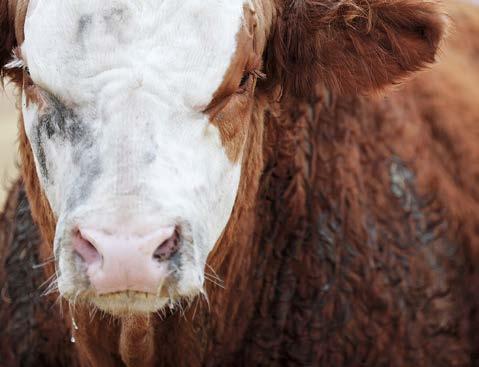

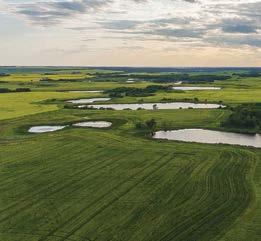
With record beef prices across North America last year, markets can get jittery, which is why Brenna Grant, Executive Director of Canfax wanted to remind producers at MBP’s AGM in February of some market fundamentals that are supporting those prices.
“When we are at the top of the market things can get nervous and that’s what happened last fall, we saw the live cattle futures drop,” Grant said. “Then we saw cattle on feed reports out of the U.S. with larger than expected placements in September and that showed the rain that the U.S. us got was insufficient for producers to retain heifers, and so we regained two-thirds of that price in January.”
Weather is, in fact, going to be one of the main things producers need to keep an eye on over the coming year.
“Will it rain and be sufficient to support cow/calf expansion?” Grant said. “We expect tight North American beef supplies for the next two to three years, depending on when rain comes and when expansion starts.”
Low cattle supplies will persist
The North American cattle industry is going through a liquidation cycle driven mainly by lack of grass production and high hay costs due to drought conditions over the last few years. That trend will continue for the foreseeable future but will not get down to historic lows.
“A long-term culling rate of 11 per cent is essentially equal to a stable herd, and the last few years we have been at about a 13 to 13.5 per cent culling rate,” she says. “That’s higher than the long-term average but it’s quite modest.”
due to grass conditions. A lot of those are coming to market now and that’s pressured our fed market prices.
But the fall run saw a smaller calf crop and fewer animals placed into finishing feedlots, which means that a tighter supply as the year progresses should be price supportive especially for cow/calf producers for the fall run.
Another pressure on the fed market is record high carcass weights in western Canada.
“We had fabulous weather throughout the fall that contributed to amazing performance in the feedlot,” Grant said. “Alberta has really large carcass weights that we need to work through in the first quarter.”
Factors facing demand
On the beef demand side, tight supplies and strong demand have meant record beef prices at retail, but those prices, though not expected to tank, will likely face pressure from food inflation, although consumers continue to want beef on their plates.
“Food price inflation is real, but the majority of our beef goes into Canada, the U.S. and Japan, and all of those are mature markets where a relatively small percentage of consumer income goes towards groceries,” Grant said. “There is a cushion there in terms of consumer resilience, and we have seen amazing consumer resilience in the last several years.”
Because demand for proteins is strongly linked
wage inflation that should continue to support consumer purchasing power going forward.
But there is always competition from other proteins like pork and poultry, so it’s crucial that, as we see tighter cattle, that we protect our market share for beef, even if it means importing more beef from countries like the U.S., Australia, New Zealand and Brazil.
“Domestic production decreased significantly from 2004 to 2015, but domestic total consumption didn’t decline because we were able to supplement with imports,” Grant said. “No producer wants to hear we are giving up market share to imports, but we were able to gain this back when our domestic production increased. In this low cattle cycle, keeping our per capita consumption is the top priority because we know we can get it back, and it’s easier to get it back from beef than from pork or poultry.”
The biggest thing that beef producers can do to help support consumer demand is to continue to produce AAA and Prime beef, for which consumer demand is increasing.
Producers optimistic (mostly) about prices
Cow/calf producers were optimistic throughout 2023, with prices for bred heifers and cows reaching a peak not seen since 2015, and indications are those prices will stick around for a while. Calf prices peaked back in September and should remain steady or strengthen a little in the year ahead, especially in the west.
Because demand for proteins is strongly linked to disposable income, the possibility of a recession in Canada is a big concern, not just in terms of prices but consumers trading down to less expensive beef cuts or switching to a different meat protein altogether.
Since 2019, Canada has been a net importer of feeder cattle, but with feeder imports down in the second half of 2023, that will lead to tighter supplies of fed cattle going to market in the second half of 2024.
“One thing contributing to the seasonality that we are going to see this year is placements,” Grant added. “We saw larger than a year ago placements in May to September of yearling grassers coming to market early,
to disposable income, the possibility of a recession in Canada is a big concern, not just in terms of prices but consumers trading down to less expensive beef cuts or switching to a different meat protein altogether.
“We still have consumers buying middle meats, like striploin steaks, in price relationships that we have seen in the past outside of a recession,” Grant said, adding that while we have food inflation, we have also seen
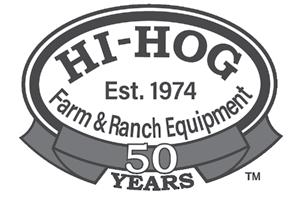
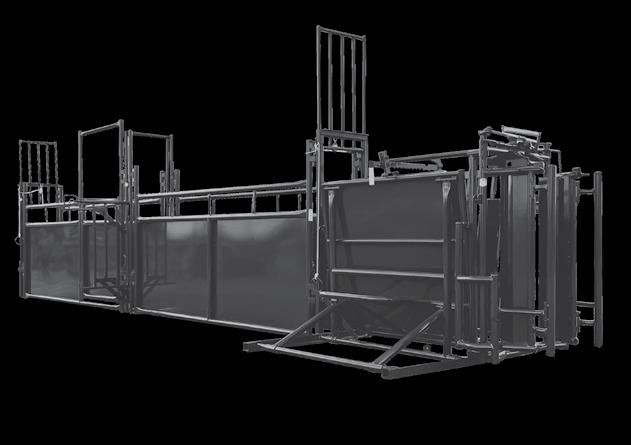

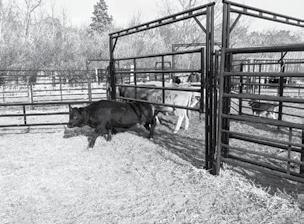

Cow and fed steer prices should continue to strengthen as the year progresses but feedlots could face pressure because of basis swings.
“What they are making in terms of assumptions on basis directly impacts what they are willing to pay for feeder animals, and how optimistic or conservative they are given the fact they are facing record high break evens,” Grant said.
For the yearling grasser market, heavy feeders, or anyone backgrounding this year started out with record high prices.
“That’s weighted to the fact that the further we go into this cattle cycle tighter supplies get and that’s price supportive as long as we can keep demand going,” Grant said.
A stronger Canadian dollar towards the end of 2023 had an effect on eastern feeder prices but little impact in the west partly due to competition to fill pens as pen space has expanded and the calf crop has shrunk.
“Expect market volatility throughout this year,” Grant said. “At these really high prices the market is sensitive to any unexpected news and that can create an overreaction in the futures market and additional volatility for producers to manage risk.”

started corn grazing in the mid-2000s when he wasn’t getting the yields he needed out of his hayland, and it was becoming increasingly difficult and expensive to buy hay as cash crop prices had driven a lot of land conversion in his area to cash crops.
“We were looking for ways to produce a lot of high-quality feed on as few acres as possible,” he said in his presentation at the Manitoba Beef Producers AGM in February. “We also seem to be in a dry trend and with corn being a C4 plant, it likes a lot of light, and really high temperatures, and it can also bring with it water use efficiencies as well, so even in these dry years where the corn doesn’t yield as high as it potentially could, it’s still doing a lot better than what hay crops are doing in our area.”
Corn requires about 21 to 24 inches per year of total moisture to achieve its full yield potential but timing of that moisture is vital as its peak water use is at the tasseling/silking stage.
Graham, who also works as a seed care specialist with Syngenta, has been making corn silage for the past six years, and although he knows that the high upfront costs for things like seed, chemicals, fertilizer and custom planting or chopping can put off some producers, his numbers on corn always compare favourably to hay costs.
“I am able to produce corn silage in the pit for about three to four cents /lb. dry matter,” he said. “When I look at what buying hay would cost me, to be able to produce that feed at home has been quite economical and an advantage for us.”
Corn production can be a bit complicated but basically producers should start by looking for hybrids with heat units suited to their area, their intended use for the crop and understand their risk comfort level.
“You can plant an earlier season hybrid and that will work for grain production, but the longer season hybrids do have a higher yield potential, so if you are looking at grazing or silage corn, going to those higher heat unit options might be a better fit.”
There are many corn hybrids available today that are specific for grazing or silage.
“There has been a big focus on livestock specific hybrids, so they are looking at palatability of the plant, kernel types, where the ear is placed on the plant, number of leaves and even leaf size and stay green traits,” he said. “The corn plant is staying green as it matures to help lengthen out that silage chopping window.”
There can be so many factors that enter into feed quality such as starch content (for energy) and digestibility that affects corn waste in manure, that Graham always recommends producers get a feed test done.
“It is our most expensive input in the winter as livestock producers and if you don’t know what you are putting into those animals how do you know what you
are going to get out of them,” he said.
Corn can be swath or bale grazed and will depend on the needs and situation on each farm. Graham has tried both and says corn grazing has proven to be a low cost, low maintenance way to winter feed cattle out on pasture. They have erected permanent fencing and grow half corn and half forages on a five-year rotation to mitigate disease and insect risk on the corn. It has reduced their labour, equipment and fuel use and the manure is spread evenly across the feed which has helped reduce their fertilizer costs the following year.
Some things to watch out for
With corn silage, nitrates can be a concern which is another good reason for feed testing, especially if producers are harvesting the corn directly after a frost or in a field that has a high N rate or the field contains a lot of weeds.
In years with high snowfall there has been some wastage and they do have to watch out for grain overload, so they have focused on finding corn hybrids that help minimize that risk.
“We feed about five to six acres at a time and watch the manure,” he said. “If we see a lot of corn in the manure it could be an indication they are starting to get a bit of corn overload, so there could be improvements we can make in terms of the type of kernel or something like that.”
The Ontario Corn Feed Beef (OCFB) program has been around for about a decade with the goal of producing a better, more consistent product for consumers. Today almost 70 per cent of all beef cattle in Ontario are on the program.
The original program required cattle to be 100 days on a ration based on 80% corn, with stringent record keeping and an audit every five years by the Ontario Cattle Feeders Association that runs the program. Producers then got $3 per head premium when they sold their cattle.
Five years ago, when the Canadian Roundtable for Sustainable Beef came out with the Verified Beef Production Plus (VBP+) program, the programs were harmonized to provide extra benefits to producers along the supply chain.
“If we source VBP+ calves, we still get our $3 per head at sale time, and if we market the cattle through Cargill, Guelph then you get a $20 per head premium through the CRSB program,” said Ontario feedlot operator, Jack Chaffe of Chaffe Farms at Mitchell, Ontario who has been on the corn-fed program since 2006.
“The catch is that you must have a continuous flow back to the cow/calf producer, and the backgrounder, so when we do a sale of those animals, we get our $20 per
head – if they have gone through a backgrounding yard that’s VBP+ and they get their $20 per head, as well as the cow/calf producer. But if any time in the chain of custody that is broken, then none of us gets a payment.” What Ontario buyers are looking for in Manitoba cattle
If Manitoba producers want to sell their calves or feeders into the Ontario market, buyers want top quality genetics for big gains and good feed conversion in the feedlot as well as a complete vaccination program, preferably with double vaccination. Implants should only be calf implants, not TBA (testosterone propionate and trenbolone acetate).
“You might get a big gain but down the road it doesn’t work good for us because a lot of feedlots use a TBA implant as their terminal implant, and if you stack too many of them up through the system you don’t get that result at the back end,” Chaffe said in a presentation at the Manitoba Beef Producers AGM in February.
Feedlots are looking for animals that are weaned and started on feed at about 60 days and that are properly castrated and dehorned before shipping. A high roughage ration should target two lbs. of weight gain on heifers and about 2.2lbs on steers, and many operators prefer them not to have been implanted at all at the backgrounding stage. Loads for cattle coming eats should be ideally around 60,000 lbs. walk on weight and
Chaffe advises producers to use a scale at the farm to try and ensure the animals are a fairly uniform weight.
Frame scores should also be consistent, and delivery dates flexible because it’s not always possible to get trucks out on the dates that producers want.
“The biggest shortage on trucking is that 20th October to 10th November when it seems everyone wants to wean calves and sell them and have them moved,” Chaffe said. “If you can stay outside of that window, I am pretty sure you will likely get paid a premium.”
Keeping in contact with potential buyers and giving them a heads up a few weeks ahead that your cattle are going to sell will mean a lot because they may need to make some room for those cattle.
Overall, if producers want repeat sales, they need to work on building good relationships with their buyers and follow up on where their cattle end up, Chaffe added.
“Over the years I have built relationships with two or three producers in Manitoba and one ranch we have been buying their cattle for the last 15 years,” he said. “I give them feedback and send the grading slips so they know how the cattle are performing at my end and we stay in touch, and I think sometimes that’s lost in the beef industry. If you can keep in contact with those sectors, it makes a difference and it will only make our industry stronger. “
It is the middle of April; the cattle market remains strong despite a few days of volatile trading on the futures markets. The uncertainty of what effects avian influenza in dairy herds will have on the cattle market, combined with on feed reports that showed more cattle on feed than expected, caused some of the speculators on the futures market to panic and start liquidating some of their positions. Depending on the month, futures prices declined ten to 14 cents Canadian. The drop in the futures influenced lower prices on the Livestock Price Insurance Program and also dropped the contract prices being paid for fall delivery of yearlings off the grass. I expect there will be more volatility in the futures market until there is more conclusive information about the long-term effects of avian influenza made available.
Right now, we only know what we are told from the information on the cases found in the dairy herds. As of April 14, 2024, there have been no reports of infections in beef cattle. It seems that avian influenza is not fatal to cattle; the cattle seem to go off their feed consumption for two to three weeks before the recovery process starts. The meat from the infected animals is safe for human consumption and the milk is safe if pasteurized. It is not the first strain of this type that has jumped to other species. There is a lot of speculation on how it is transmitted. Until there is more science-based information available, this “black swan” will continue to hover over the cattle market.

The Bottom Line
very strong, with some local demand for breeding-type females. The heifers are selling 20 to 30 cents per pound behind the steers, but the market is so much stronger than last spring that many producers are tempted to sell what heifers they have left.
The fed cattle market is better than last spring with some cattle out of Manitoba selling for $4.20 on the rail delivered to Alberta in the second week of May. One plant is on cash and carry, buying today and harvesting next week. The other plant is pricing for delivery a little further out. Feedlots that are selling on the cash market are barely breaking even on what they selling
higher than what most of us expected at this time of the year. Good butcher cows are selling from $1.65 to $1.70; that is 45 cents per pound higher than last April. Big premiums are being paid for young feeder-style cows and heiferettes. The trade-in value on bulls has been very good, with top bulls trading from $2.00 to $2.10 per pound, with some premiums paid for high yielding exotic bulls.
There is strong demand for good quality bred cows from dispersals or with a good history. Even the “one and done” cows seem to be going back to the farms. It is encouraging to see the bred cows going back to the farms, but those buyers are replacing their inventory, not starting new herds. The truth remains the same. There are fewer beef cows on both sides of the border, and the number of producers is dropping at an alarming rate.
With the numbers of cattle starting to drop off, many auction markets in Manitoba will be switching to their summer schedule earlier than last year. Some will be going down to every second week, while others may close completely for the summer. Call ahead to the market of your choice before you deliver to make sure there is a sale that week.
With the numbers of cattle starting to drop off, many auction markets in Manitoba will be switching to their summer schedule earlier than last year. Some will be going down to every second week, while others may close completely for the summer. Call ahead to the market of your choice before you deliver to make sure there is a sale that week.
The good news for the cattle sellers was that the cash prices being paid at the auctions did not react the same way. Some of the cattle were down, especially the fleshy steers and heifers over 850 pounds. However, if the cattle were green and under 850 pounds, there was strong demand. The cattle destined to the pastures for fall delivery were still strong. The demand from the east was aggressive on the right kinds. The heifer market is still
today. There will be a small gap in the market as the fed yearlings are just about finished, and the fed calves are not quite ready for harvest. The west price is considerably stronger than the Ontario market, which is about $4.00 dressed. Ontario has even less competition in the packing business than the west. Their only other option is to sell the cattle live or ship south to one of the nearby American plants.
The butcher cow market is very strong and the number of cows coming to the market is considerably
Congratulations to John Baier of Swift Current, SK on winning the annual Man/Sask Livestock Auctioneering Championship held in Virden on March 23. Paul Moore from Yorkton was second, while Brady Olson of Moosejaw picked up third place. Ty Culter from Moosomin won the Bob Wright Memorial buckle for top Rookie. Allan Munroe from Killarney, Brock Taylor from Melita and Josh Unrau from the Gladstone Auction Mart all made it to the second round in the competition. Seventeen auctioneers took part in the competition hosted by Heartland Virden. The sale was very strong and 3,200 head were sold.
Until next time, Rick
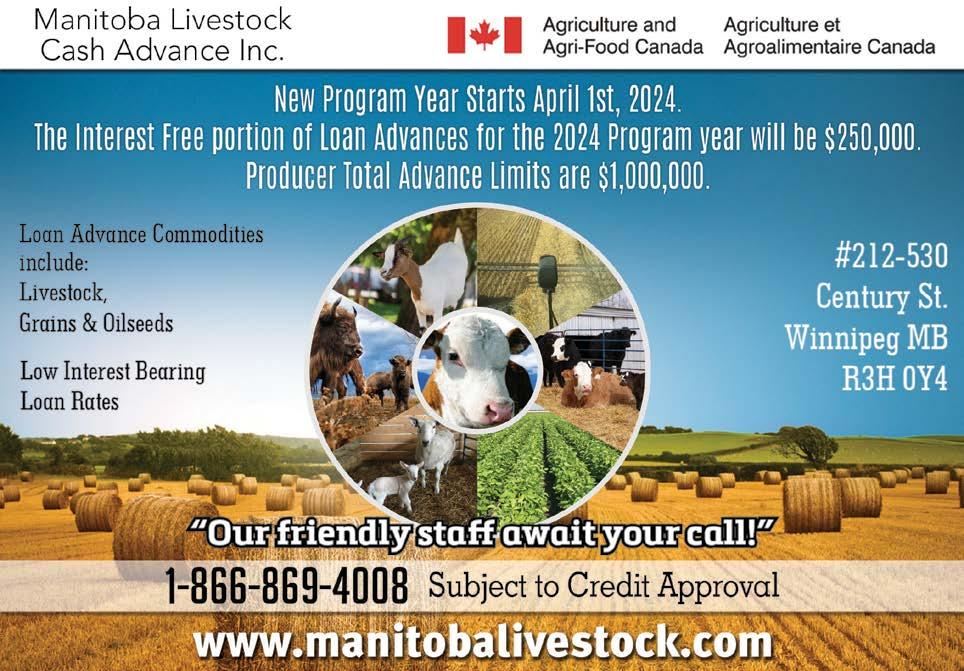
Recent land and cattle price increases have many Manitoba cattle producers asking, “How do I determine the value of pasture rent?” Pasture land is highly variable throughout the province and can vary significantly between farms. A pasture rental agreement is an arrangement between the landowner and the producer grazing the pasture.
The main factors impacting pasture rent are carrying capacity and forage quality of the pasture. The nutritional availability from the pasture needs to equate to pounds gained by the animals grazing it. Other considerations include who is maintaining the fence and water supply, who is checking and treating sick animals, and who is purchasing, monitoring, and delivering minerals to the pasture.
Latest data from the Manitoba Agriculture Beef Cost of Production outlines five different pasture types ranging from $0.93 cents per day to $1.34. These rates are not intended to be used to set rental rates across the province. They are examples of how to calculate pasture rental rates based on specific scenarios. The types of pasture systems used in these examples are marginal
pasture, improved or tame pasture, Crown Land, and Community pasture.
Producers interested in determining the cost of owning pasture or comparing which pasture systems are the most economical for their situation should check the Beef Cow Calf Production Costs spreadsheet, which can be found at www.manitoba.ca/agriculture/farm-management/production-economics/cost-of-production. html. Put in your own costs, carrying capacity, per cent land equity, type of fence, type of watering system and you can quickly see what the cost of different pasture systems are.
If a producer is more interested in determining pasture rent based on land value, and a set rate of return on their own land values, they can use the Pasture Rental Rate Calculator, which can be found by scanning the QR code and scrolling to the forage section. These are not set rates but are examples of how to determine pasture rent rates. Put in your own land values and expected rate of return for
this calculator to help you. Keep in mind taxes are an extra expense and are added to the cost of pasture rent in this scenario.
The Pasture Rental Rate Calculator can generate values on any number of acres. The variables used in this calculator are acres of pasture, days grazed, the number of animals and the average weight of those animals grazing. Below, you can see three examples of land values from $500 to $1,500 acre land value.
The rent ranges from $0.66/head per day to $1.40/ head per day or $17.75 an acre to $49.25 per acre respectively. As land value increases, it is imperative that producers see an increase in carrying capacity or gains from that pasture to keep the value of rent reasonable.
As carrying capacity increases, nutritional demands will have to be monitored, but efficiency can be gained with proper management based off the same rent per acre. Increased grazing management is key to increasing carrying capacity.
Also, for sample pasture rental agreements, please visit: www.manitoba.ca/agriculture/farm-management/ contracts-and-leases/index.html
For more Information, please call: Ben Hamm –Farm Management Specialist, 204-392-9350.
Rented Rented Rented Pasture Options - Cost Summary & Comparison


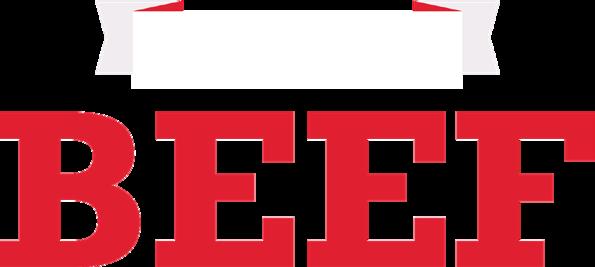


 Jeff Legaarden Business Development Specialist, Manitoba Agricultural Services Corporation
Jeff Legaarden Business Development Specialist, Manitoba Agricultural Services Corporation
jlegaarden@masc.mb.ca
Question: We’re seeing record high prices right now in the cattle industry. Why would I consider purchasing a Livestock Price Insurance Policy this year?
Answer: This year, we might see the highest-ever settlement prices for calves. We might also see BSE, or avian flu, or a number of other variables that may create market fluctuation in Canada. Nothing is assured in life, the universe, and the livestock industry.
The closest thing to real assurance is insurance. And with a Livestock Price Insurance (LPI) policy, you can protect yourself while the market is favorable, giving you peace of mind against any market downturn that may come.
Right now, the markets are steady but at any point, we could see a shift that ultimately results in a rather modest year for Canadian calf settlement prices. At the end of the day, you’re left with a modest amount of money for a year of your hard work on the farm. But you’re also likely to get an LPI indemnity payment for the difference between the fall settlement price and the strong LPI floor price you insured in spring. To me, the premium is worth your peace of mind.
We have already seen a reduction in the premium tables of $20/hundred from futures drop since LPI-Calf policy sales started this February. The indicators suggest this drop in the futures market is caused by the avian flu scare. Trust me, you don’t want to be the livestock producer who works hard all year long, raising calves to sell in fall, and due to forces completely beyond their control, they’re left with little to show for it.
This is the scenario where LPI shows its undeniable value. Picture this scenario: you bought a policy to insure a relatively high floor price, the bottom drops out of the market for any reason imaginable, but with your sizeable LPI payment (the large difference between your high floor price and the market’s diminished settlement price), you’ll remember this year as bearable and satisfactory instead of stressful and unfortunate.
Now is a great time to purchase an LPI policy, but you aren’t forced to lock in the highest available premium index. Find the balance between the premium you want to pay and the coverage level you feel is fair.
you and your operation. The June 13, 2024 deadline for purchasing a LPI calf policy will be here before you know it!
In the next issue of Cattle Country, a Manitoba Agriculture forage or livestock specialist will answer a selected question. Send your questions to Elizabeth.Nernberg@gov.mb.ca.
StockTalk for Cattle Country is brought to you by Manitoba Agriculture. We encourage you to email your questions to our department’s forage and livestock team. We are here to help make your cattle operation successful. Contact us today.
Andrea Bertholet Killarney 204-851-6087
Kristen Bouchard-Teasdale Beausejour 431-337-1688
Shawn Cabak Portage 204-239-3353
Pam Iwanchysko Dauphin 204-648-3965
Andrea.Bertholet@gov.mb.ca
Kristen.BouchardTeasdale@gov.mb.ca
Shawn.Cabak@gov.mb.ca
Pamela.Iwanchysko@gov.mb.ca
Cindy Jack Arborg 204-768-0534 Cindy.Jack@gov.mb.ca
Juanita Kopp Beausejour 204-825-4302
Elizabeth Nernberg Roblin 204-247-0087
Juanita.Kopp@gov.mb.ca
Elizabeth.Nernberg@gov.mb.ca
With recent record prices for cattle, cull cow, replacement, bred cow and cow/calf pair sales have been brisk with many herds in expansion. Mitigating disease risks by paying attention to biosecurity should be top of mind especially with the recent news of the finding of avian influenza virus as a cause of sudden decrease in milk production and feed intakes in dairies in several American states.
BIAV (Bovine Influenza A Virus) is the new name for the HPAI (Highly Pathogenic Avian Influenza) outbreak in American dairies. There are four major strains of Influenza - A, B, C and D. The Influenza A reservoir host is waterfowl and shorebirds. This includes seagulls which are often found around larger livestock operations feeding food waste such as potatoes. Influenza is not new in cattle - Type D has been associated with respiratory disease in several studies though it is not thought to be a major pathogen at this time. The severity of disease that results from infection depends on how pathogenic the virus is. Pathogenicity can vary depending on strain types and the mutations that develop. Influenza is a challenge because it can adapt and mutate rapidly such that it can quickly change from causing mild disease to one that causes more severe disease. These mutations are the reason it is difficult to predict and develop flu vaccines for upcoming seasons - it is very much a hit and miss venture. Additionally, this virus adaptability makes it easier for it to jump species. It is for this reason that a bird flu caused disease in dairy cows. It certainly could cause disease in beef cattle, but I suspect that the
high producing older dairy cows that became infected were likely predisposed due to the higher metabolic stress they are under as compared to the other groups on the farms. Additionally, this virus appeared to target the mammary tissue.
Will we see BIAV (HPAI) in our cattle here in Manitoba? It is a concern as we are along one of the major migratory pathways for wild birds. However, it has also been found that the primary transmission on the affected dairies was through milking equipment and dairy workers handling milk.
Consequently, that means that we need to look at biosecurity from a variety of different angles: incoming and within the herd. We want to keep disease out and we need to minimize the spread of disease, whether “naturally occurring” or newly introduced, within the group.
Keep disease out by quarantining all new purchases for a minimum of 21 days. This should ideally be done on another premises, even if just across the road but certainly by penning separately with separate watering and feeding areas. While it is easy to think of the new purchases like bred cows and replacement heifers but have you considered other “new to the farm” situations like the orphan calf off Kijiji, nurse cow to raise all the twins, feeder/backgrounded cattle, purchased or leased bulls, calving cows for customers or neighbours, community pastures, shared fence lines etc. Even animals from your herd can bring things back if you show livestock, even of other species like horses, sheep, or goats. Do you regularly help your neighbour round up cattle with your horse? Have you ever had unsold animals returned from the auction mart? Think of the wildlife and birds that
regularly pass through our premises. All these can be Trojan horses.
It is not just live animals that bring disease to the farm. Do you request that visitors wear clean boots and outerwear when visiting or limit access to all areas of your premises? Do you still use frozen colostrum from your local dairy as a backup rather than the variety of quality commercial packaged colostrum products? Do you lend out your calf scale, trailer, tractor, TMR wagon, corral panels or truck? What about your health management equipment like elastrators, automatic syringes, stock prod, etc. Regular cleaning and disinfection is important for disease prevention.
You get the picture - just having a beef herd means you need biosecurity as no herd is closed. Doing business causes potential biosecurity breaches. We need to keep our guard up and be vigilantly monitoring for disease.
Keep your farm organized - minimize risks for disease transfer from wildlife by protecting feed stores and preventing rodent infestations of old bales and garbage/junk piles. Facility repair and maintenance helps maintain health.
Work with your veterinarian to focus on management of the risk areas identified above. Knowing your Trojan horses allows you to manage them better. Implement a vaccination program to prevent disease and improve your herd productivity. Keep records of and discuss any ongoing health concerns, even if deemed trivial, with your vet. No question or concern should be dismissed. Early detection can prevent a problem from quickly becoming a difficult to manage nightmare.
If producers have bushland where they are grazing their cattle, they should be aware of where the chokecherry bushes are, and try to avoid placing their animals close to them, especially in the spring when the new growth is starting to appear on the bushes.
“Although a lot of these plants are not palatable and cattle don’t want to eat them, they can eat them by accident when there aren’t a lot of forages around and they see the green leaves and shoots,” Brown says. “Know where the chokecherry bushes are – sometimes they have a black fungus on the stems and you can see that – but generally it’s just a question of knowing which plants are around.”
Most producers generally have a good idea of what plants are present in their pastures and haylands she adds, but should be a bit more vigilant if they have taken on new land or are grazing where they normally wouldn’t.
Not poisonous but can cause injury
Other plants present in pastures may not be considered poisonous but can still be injurious to cattle or have adverse effects on their health, like kochia, which cattle like to eat because it has a high salt content, but that can accumulate nitrates and other compounds that are not good for cattle if they eat too much of it.
Foxtail barley is not toxic, and can be grazed safely early in the season, but should be avoided as soon as it starts to develop seed heads.
“Cattle can get the awns stuck in their mouths and even poked in the eyes,” Brown says “The same with other plants like burdock which has a lot of burs that can get on the coat and the face and cause irritation. But also, these awns and burs can get in the mouth and cause discomfort, and then the animals will tend not to feed, and could be at risk for infections.”

A lot of weeds in pastures can also be an issue because in dry conditions they can quickly accumulate high levels of nitrates.
“In general, I wouldn’t expect to see it first thing in the spring, but in a drought, we do have to watch depending on which species are being grazed, you can end up with nitrate poisoning in feeds. We do see this sometimes in weeds, although typically we see it later in the year,” Brown says.
“But if weeds are present, or you know there are weedy areas in a pasture or an old hayfield that the cattle may have access to, you just need to be aware of that. It’s something I would be more watching for later on in the summer especially if there have been a drought or even a frost, something that causes stress to the plants and causes them to accumulate nitrates. If animals eat those plants they can get nitrate poisoning.”
Narrowleaf milkvetch (and some other vetches)
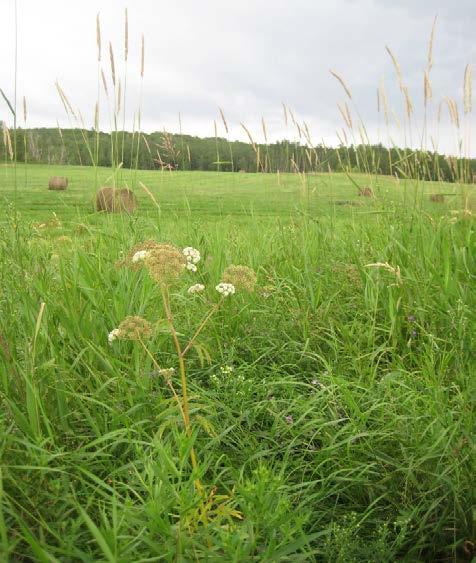
don’t have poisonous compounds in them but they do contain a lot of selenium which can be toxic in high doses.
An ounce of prevention
To help prevent animals from grazing dangerous species it’s important not to overgraze, and if producers are rotational grazing, they shouldn’t wait too long to move the animals so they are hungry when they are turned out onto a new area.
“If they move onto new pasture when they are very hungry, grazing animals sometimes aren’t as selective as they usually are,” Brown says. “If the poisonous plants are ready earlier than other plants, they might be some of the earliest things out there that are ready to eat, so sometimes they get ingested that way.”
It’s often hard to verify that an animal has died out on pasture from poisoning without an autopsy, but Brown emphasizes it’s important to take preventative action and try to find out the cause to help prevent more potential losses.
“The first thing I would do would be to make sure wherever that animal died, get the other animals away from there until you know for certain what caused the death,” she says. “If you do know there is a certain plant that you can identify, you can fence that off and remove access to that area.”
Brown highly recommends getting an autopsy done.
“You can make some assumptions about what is around but anything could happen to animals on pasture. I have seen animals that were presumed bloated and it was a lightning strike,” she says. “There are lots of things that could take an animal down, poisonous plants or feed are just one. You really need to find out what it is, because if it’s something that is preventable you don’t want to lose any more animals.”
Knowing what plants are present in their pastures is likely the best defense against accidental poisoning of cattle, and there are many free plant identification apps available that work well to help producers identify species. The trick is to take a clear picture and make sure there aren’t other types of plants in the image.
“There’s not a lot of poisonous plants you have to identify, so make sure you know the bad ones,” Brown says. “Google the plants you need to look out for and keep an eye out for them as you are rotating animals through pastures. Contact your Manitoba Agriculture staff; we can help identify poisonous plants and develop management strategies if you know poisonous plants are in your grazing and hay fields.”
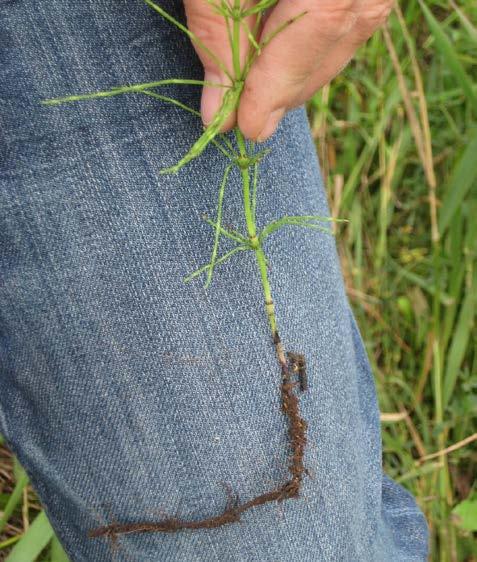
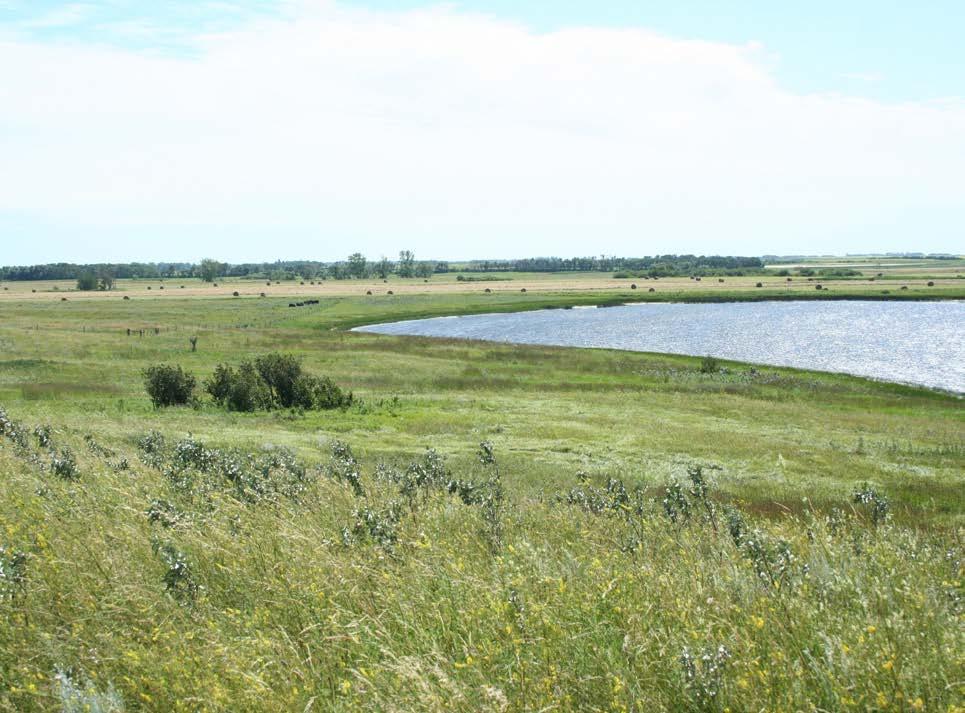
Nearly 300 researchers, farmers, policy makers, and industry members logged on daily to view the 9th Annual Sustainability of Canadian Agriculture Virtual Conference (SCAC), March 12-14th 2024. The conference focused on topics that explored Indigenous perspectives in reshaping our food systems, as well as water management and using precision technologies to ensure agricultural sustainability.
Co-hosted by the National Centre for Livestock and the Environment (NCLE) at the University of Manitoba and Agriculture and AgriFood Canada (AAFC), the event featured panel discussions, a GHG farm emissions modelling workshop and more. This year’s theme focused on embracing change to achieve a sustainable future in Canadian agriculture.
Indigenous perspectives in reshaping our food system
preserving peat lands in order to make meaningful change. Management practices such as the use of cover crops and green manure offer a way to give back to the land. Kimmerer also discussed the concept of an honorable harvest, a set of unwritten guidelines that justifies harvesting from the land but acknowledging the need for sustainable practices. The change needs to be profound, a new world view. Her words echo views of last year’s SCAC keynotes Tim McAllister and Henry
Robin Wall Kimmerer, plant ecologist, educator, writer and MacArthur Fellow kicked off the event with a keynote presentation titled “What does the earth ask of us: Indigenous knowledge for sustainability”. Kimmerer described the causes of our current environmental challenges and noted that there are ample signs indicating that change is needed. But the question is how?
Robin Wall Kimmerer, plant ecologist, educator, writer and MacArthur Fellow kicked off the event with a keynote presentation titled “What does the earth ask of us: Indigenous knowledge for sustainability”. Kimmerer described the causes of our current environmental challenges and noted that there are ample signs indicating that change is needed. But the question is how? She suggested adoption of traditional ecological knowledge and wisdom, focused on nature-based solutions including reforestation, wetland restoration, regenerative agriculture, soil banking, and
Janzen as they described the need for whole systems change to reach net zero in agriculture.
Jason Cardinal is the manager of the Flying Dust Market Garden, located on a farmstead near Meadow Lake, Saskatchewan. The garden evolved from a small, two-staff operation in 2009, to a 25-plus staff operation that generates fresh produce, berries, and honey, as well as raising bison. Most importantly, the market garden trains community members including students in agriculture and food processing through hands-on
workshops. Community members use the garden to connect to the land and view it as a symbol of sustainable agriculture and local development. The garden provides nutritious food to community members, other First Nations, food banks, restaurants, farmers markets and wholesalers. Innovative ideas and forward thinking have increased revenue and allowed for expansion. With new funding, the garden has planted a food forest and will be investing in more bee hives, poultry production and a hydroponic operation to grow leafy greens and herbs.
Christina Gish Hill, an Associate Professor at Iowa State University, echoed the words of Kimmerer and emphasized the importance of looking for wisdom and guidance from ancestors, including an examination of seed banks. Hill works with Indigenous communities in Iowa, Wisconsin, Nebraska and Omaha. Through her work, she is exploring Indigenous food sovereignty, defined as restoring, growing and maintain culturally appropriate practices focused on the community. Hill discussed the concept of rematriation and practicing reciprocal respect to restore relationships with the landscape leading to enhanced resiliency of communities, agriculture systems and the environment.
Jill Falcon Ramaker is an Assistant Professor of Community Nutrition and Sustainable Food Systems
and the Director for the Buffalo Nations Food Initiative at Montana State University. She discussed the geographical, cultural and economic history of Indigenous people that lived in the Northern Plains and Rockies region. The Anishinaabe people that lived in this region were a part of the longest sustained food system on Turtle Island, called the Buffalo Culture Food System. This system functioned for thousands of years until its existence was disrupted by colonialism. Falcon Ramaker described how the Buffalo Culture Food System focused on kinship, network exchange and reciprocity in the past. The Buffalo Nations Food Initiative is working towards rebuilding relationships and intertribal food sovereignty in this region. The initiative is focusing on cultural knowledge regeneration through ancestral seed propagation, and training Indigenous students to work in food systems through land and community-based education.
Helen Baulch is an Associate Professor at the School of Environment and Sustainability and Global Institute for Water Security at the University of Saskatchewan.
Nutrient pollution, specifically excess phosphorus (P), is one of the largest water quality challenges on the prairies. Excess P in runoff can make its way to lakes and rivers. Lakes, in particular, are extremely sensitive to excess P as small amounts of this nutrient can cause algae blooms, impacting the ecosystem including fish populations, water ecology, as well as animal and human health. An added challenge is that some agriculture practices, including those that have a positive impact on landscape sustainability such as zero tillage can also have a negative impact on water quality due to increased nutrient runoff. Therefore, there can be trade-offs in the adoption of best management practices which are a regionally specific consideration. Baulch suggests that we need pragmatic “now” solutions to address water quality issues. Rotational tillage, changing nutrient management to keep the nutrients below the soil, flow control to help manage erosion, promoting protection of wetlands, avoiding winter application of manure and examining and updating “right rate recommendations” are a few examples of solutions to nutrient pollution of lakes and rivers.
University of Manitoba and Stefan Signer, a dairy farmer and a board member for Dairy Farmers of Manitoba and Dairy Farmers of Canada. The livestock industry is faced with several challenges including increased demand for animal-sourced protein, as well as environmental and social sustainability. At the same time, much of the agricultural sector is faced with labor shortages. Precision agriculture can address these challenges through the collection of data using artificial intelligence (AI) tools, including sensors. For example, AI is being used to collect data on frequency of milking, cow feeding, time of breeding, sire selection and health. The data serves as a source of information that producers can use to make management decisions. Precision agriculture allows us to monitor the animals on an individual scale to provide useful management decisions that address efficiency, reduce GHG emissions and improve animal welfare. Both speakers were excited about the future of AI in the dairy industry.
Keshav Singh is a research scientist at AAFC in Alberta who uses digital technology to better under-
new technologies that address animal health/welfare, increase production efficiencies and environmental sustainability focusing on regenerative agriculture. Projects include soil biological additives to improve soil health, satellite tools to asses forage biomass, virtual fencing, noninvasive tools to measure soil carbon stocks and more.
Student videos, Holos workshop and the Barley Sandwich Session
Graduate students were encouraged to feature their research to improve the sustainability of agriculture in three-minute videos. Thirteen students featured their research projects ranging from livestock production, agronomy, and entomology to grain and oil crop processing. The top videos this year were submitted by Michael Killewald and Breanna Zwick, from the University of Manitoba and Shreemi Prabhakaran from Dalhousie University. The People’s Choice Award was given to Hamza Jawad, also from Dalhousie University.
Given that water is finite, we will see more pressure on water resources in the future. Beyond increasing infrastructure and building water reservoirs, farmers can play a role by adopting precision technologies including the use sensors that optimize water usage and allow for more precise delivery. In addition, plant breeders can play a role by developing plant varieties that are more drought tolerant and require less water. It was evident from her presentation that water is both highly valued and undervalued with the need to examine use at the watershed scale.
stand anatomical, developmental, physiological and biochemical properties of plants. Digital imaging sensing systems can be used in greenhouses and in small field plots. Aerial drones can be used for large fields and satellite drones are used for large scale field mapping.
Sean Thompson is a director at Olds College Technology Access Centre for Livestock Production and also runs a Shorthorn operation on his farm in Alberta. The Access Centre is home to a 1,000-head feedlot, 1,000 acres of pasture, as well as labs and greenhouses. They work with industry, academia and government to test
More than 150 conference participants joined the Holos™ model training workshop and received handson training using the model, designed to estimate and reduce greenhouse gas (GHG) emissions based on information entered for individual farms.
Also back this year was the Barley Sandwich Session. This end-of-day session was designed to stimulate conversations between conference attendees, scientists, producers and industry in livestock, soil health and water use.
The 2024 Sustainability of Canadian Agriculture Conference organizing committee, comprised of researchers, industry and producers, was co-chaired by Kim Ominski, Director of NCLE, and Roland Kröbel with AAFC. The organizing committee would like to thank all those who attended and helped to make this annual conference a success. See you all next year!
Visit the SCAC 2024 conference website to view recorded presentations, information about speakers, student research videos and more. See https://umanitoba.ca/agricultural-food-sciences/sustainability-canadian-agriculture-2024
Willemijn Appels is a Senior Research Chair at Lethbridge College and leads the Mueller Irrigation Group. Her presentation focused on sources of water used in irrigation, the role of water districts in regulating water, allocation of water to farmers and strategies to improve water use efficiency. Given that water is finite, we will see more pressure on water resources in the future. Beyond increasing infrastructure and building water reservoirs, farmers can play a role by adopting precision technologies including the use sensors that optimize water usage and allow for more precise delivery. In addition, plant breeders can play a role by developing plant varieties that are more drought tolerant and require less water. It was evident from her presentation that water is both highly valued and undervalued with the need to examine use at the watershed scale.
Ryan Canart is a producer and the General Manager at Assiniboine West Watershed District. The main concern of the 83 members in his district is responding to the variation in weather patterns resulting in both flooding and drought – sometimes within the same growing season. Past farming practices have resulted in the draining of wetlands resulting in the loss of carbon (C). This has led to a decline in the soil’s ability to hold and store water and buffer the extremes of wet and dry weather that contribute to soil erosion. Canart described programs offered through the conservation district that focus on using plants and animals to increase soil C and to restore and conserve wetlands. These include use of cover crops, shelter belts, rotational grazing and water retention using small dams and backflooding infrastructure. On his own farm, Canart uses cattle as a tool to increase the land’s ecological resilience.
Precision technologies for a sustainable future
This session featured Gabriel Dallago, an assistant Professor with the Department of Animal Science at the
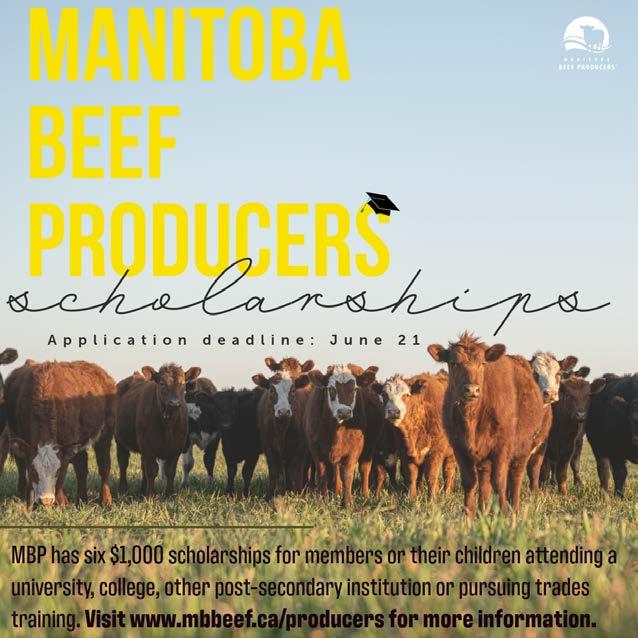
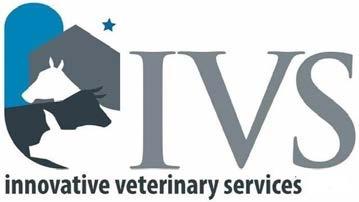
As season 35 of Great Tastes of Manitoba is already in full planning stages, a whole new series of meal ideas to be developed is awaiting me. Being able to exercise my creativity and palate to develop new recipes for the upcoming season is totally my, as the kids say, jam. I love to introduce ingredients and flavours into common applications or dishes. This recipe will be featured next season, so you’ll have to stay tuned to watch for more details, tips and tricks.
One dish that was a constant at all our family dinners was coleslaw. It is a recipe that has been passed through generations, and beloved by anyone who
tries it. It rarely has been altered until it landed in my hands. I’ve tried a few variations with this heirloom and although it was the inspiration behind the slaw in this recipe, it is almost unrecognizable so I’m not giving away any family secrets!
go well with spicy grilled jerk chicken or wing night or a summer BBQ next to the potato salad.
Yields: 24 sliders
Ingredients:
900 g Chuck Roast
2
Mango-Fennel Slaw:
1 small Green Cabbage, shaved thin
1 Bulb Fennel, shaved or sliced thin
2 Mangoes, julienne
1 Medium Carrots, grated, rinsed
3 ea Green onion, chopped fine
Dressing:
¼ Cup Lemon Juice, fresh
1/3 Cup Canola Oil
2 Tbsp Sugar, white
1 tsp Salt
¼ tsp Celery Seed
1 tsp Dijon Mustard
¼ tsp Black Pepper
½ tsp Garam Masala
METHODS:
Slow Cooker Beef and Gravy:
1. Heat a cast iron pan (or stainless pan) over high heat and add 2 tsp of canola oil.
I’ve introduced some flavours such as fennel, mango and garam masala to this slaw for some interesting new tones to what would normally be a classic cabbage slaw. As a member of Team Vinaigrette (as opposed to Team Creamy coleslaw), I stay true to the acid and use lemon juice instead of vinegar. This coleslaw recipe has some Caribbean flair with the notes of curry and mango and the high notes of the licorice from the fennel. If you’re not eating this slaw by the bowlful, this coleslaw would
This easy slow-cooker meal, much like any other slow cooker meal, can be thrown on Sunday morning in time for Sunday night dinner. Of course, size is optional. As fun and cute as sliders are, I won’t judge if they’re sized up into regular sized beef dips. I used an eye of round as it is more affordable and leaner, so there wasn’t too much excess fat in this dish. However, beef short ribs would be utterly sumptuous, just keep in mind that you may want to skim the fat off the top or the richness may be a little over the top! The acidity of the coleslaw would cut through the fattiness with each bite. Enjoy!
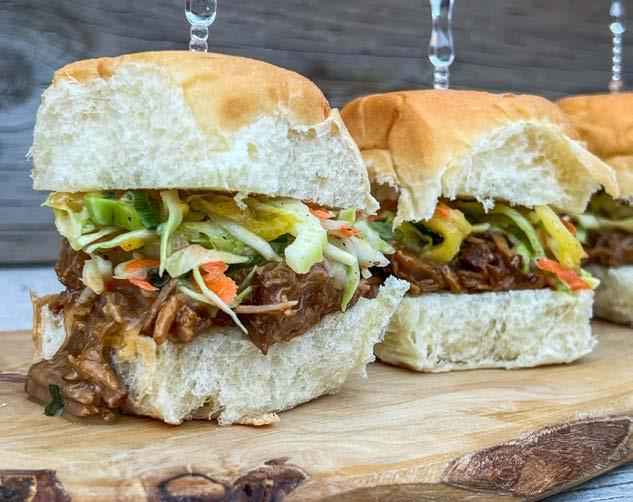
2. While pan is heating, pat roast dry with paper towel and generously salt and pepper on all sides.
3. Sear roast on all sides until dark brown.
4. Add seared roast, carrots, onions and celery to slow cooker turned on high.
5. In a pot over medium high heat, whisk together beer, tomato paste, garlic, soy sauce, and beef stock. Bring to a low boil, transfer to slow cooker and add bay leaves.
6. Cover and cook for 7-8 hours until roast is tender and can be easily pulled apart.
7. As beef cooks, make coleslaw. See method below.
8. Once beef is tender, remove from slow cooker, and transfer to a bowl. Use two forks to pull beef apart. Set it aside.
9. To make the gravy, remove the bay leaves from the slow cooker pot, and transfer all liquid and cooked vegetables to a blender, and blend on high. Strain hot mixture through a fine mesh strainer into a medium sized pot. Discard solids from strainer.
10. Whisk together corn starch and water to create a slurry. Add slurry, tabasco and gravy browning
seasoning to the pot and bring to a low boil while whisking constantly until thickened. (For extra smooth gravy, strain through a fine mesh strainer a second time.)
11. Ladle 1 cup of gravy into the pulled beef and stir until evenly coated. Adjust seasoning to taste.
Coleslaw:
1. Add all dressing ingredients to a food processor or smoothie blender and blend on high until fully incorporated.
2. Add all salad ingredients and dressing to a large bowl and toss until evenly coated.
3. Place in a container with a lid and chill until required. Can be made a day in advance.
Assembly:
1. Place desired amount of gravy coated beef on bottom half of sliced slider bun. Top with desired amount of coleslaw and top with the other half of bun.
2. Serve with remaining gravy to dip.